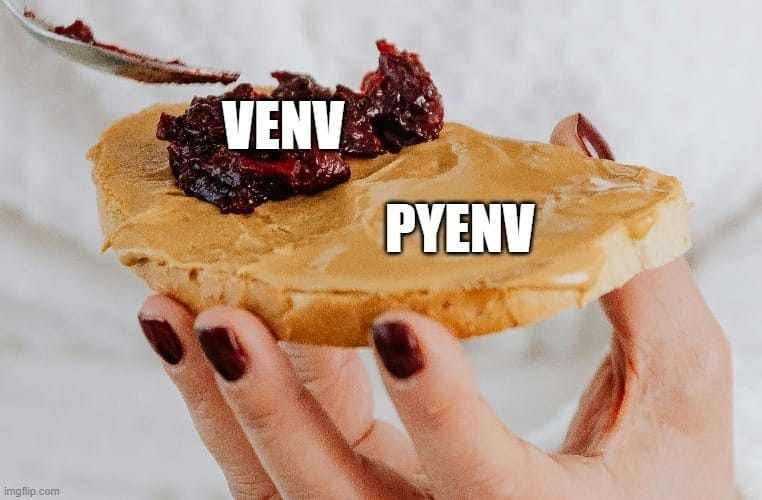
TL;DR: Digging deep into how pyenv and venv redirect Python calls helped me get a tactile sense of my environment and understand how developers use environment variables and shims to stitch programs together and build flexible, robust environments.
What I did
A deep dive into venv and pyenv.
Why I did it
I knew pyenv and venv are essential tools for building robust Python applications, but my understanding of how they worked was fuzzy. Level-up means water shoes on, gloves on, into the weeds.
What I learned
Both tools depend on the same mechanism — the PATH — but use it for different layers of control.
pyenv
Purpose: Controls which Python version is used globally, per shell, or per project.
How it works: Inserts the directories ...\pyenv-win\shims\ and ...\pyenv-win\bin\ into the PATH environment variable. When you run python, PowerShell resolves to the shim (python.bat) in shims\, which applies pyenv’s version resolution (local → shell → global) and launches the selected interpreter.
Note: Ensure this shim directory appears in PATH before any other directory that contains a Python executable.
venv
Purpose: Provides an isolated environment for packages and execution.
How it works:
- Builds the
.venvdirectory structure. - Writes
pyvenv.cfgwith the base interpreter information. - When activated, prepends
.\.venv\Scripts\to PATH, sopythonresolves to.\.venv\Scripts\python.exe.
Note: The python.exe inside .venv is a lightweight bootstrap that reads pyvenv.cfg and runs the real interpreter (e.g., in ...\pyenv-win\versions\...).
How they work together
With pyenv managing your installed versions, any virtual environment you create inherits that context. Inside the venv, python resolves to .venv\Scripts\python.exe, which ultimately runs the specific interpreter version that pyenv selected.
Takeaway
I noticed two compsci meta-patterns:
- Use environment variables (especially PATH) to route execution to the right directory.
- Use shims or bootstrap executables to redirect calls without hard-coding paths.
I like how both tools solve the same navigational problem at different layers of the stack.
Related Posts
tags: #Python, #PowerShell, #applied-learning, #fundamentals